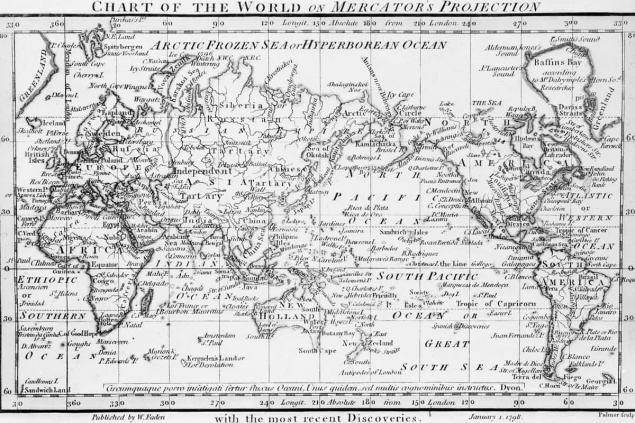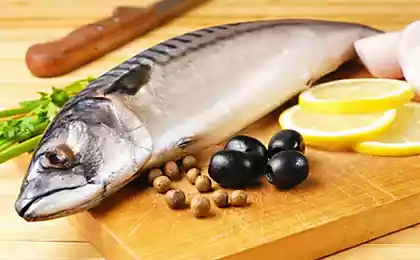182
Why didn’t even hungry sailors eat fish they had just caught?
Fish is a very nutritious and useful product. It is rich in proteins, and also contains many useful vitamins and minerals. People have been eating fish since ancient times, and the dawn of this industry occurred during the time of great geographical discoveries. Perhaps the search for prey led us to these discoveries. I have always been interested in a strange question. Why didn't the sailors catch fish even when they ran out of food? They knew which fish they could eat and which they couldn’t. In the ocean, such a mistake can be fatal.

Mariners of the era of great geographical discoveries almost did not eat fresh fish for very banal reasons. However, to understand them, we must dive deeper into this era.

First, fishing interferes with the implementation of the assigned combat tasks. To feed fish to seafarers on a warship or merchant ship, you need to engage in fishing on an industrial scale. We need to find and catch the joint, throw the nets, if there are any. And even if the catch is solid, the cutting of so many fish will take a lot of time. In addition, such fishing will require a lot of precious fresh water.

With a tailwind, the speed of the sailboat could reach four knots or more. That is, in a week you could walk a distance of about 700 miles and safely reach your destination. Of course, no one wanted to stop and fish in such conditions.

However, during idle or calm, fish were caught, but extremely large to be enough for the entire crew of the ship. Cannons or wooden rays were used as a rod. In addition, if there were few fish, and everyone wanted to eat, a fight was inevitable.
Most often food problems occurred in the open ocean. In such places, schools of fish swim at great depth. To catch them fishing gear XV-XVIII centuries is simply impossible. But if you managed to swim to shallow water, it is easier to get to the shore and eat there.

Sailboat cabins have always been clogged with goods, gunpowder and food. Therefore, no one in their right mind will occupy valuable space with networks that may not be useful at all. It is more reliable to take a dozen barrels of corn beef and problems with provisions will be solved.

In the open ocean, things with wood are not very much. Cooking caught fish is banal on nothing, and no one would eat raw.
The crew of expeditions was always staffed with a minimum number of sailors. Everyone worked at the limit and to allocate someone for fishing was quite problematic. Therefore, the diet of sailors mainly consisted of simple, not requiring additional cooking. Also, the sailor's diet included hard cheese, crackers, corn beef, gallets and rum. Sometimes dried fruits, jam, sauerkraut were added to the menu. But the fish was an extremely unreliable source of food and no one bothered over its prey.

What can I eat? It is also important to know which fish to eat and which not. Seawater has a large amount of salts, heavy metals and toxins. These elements get into the algae and then into the fish. Therefore, it is not recommended to eat sea fish, which may contain a large amount of mercury. It includes: swordfish, shark, marlin, gray hump, white hunchback, sturgeon, lufar, striped perch, royal mackerel, shed, European eel.

© GettyImages The safest are fish such as anchovies, lobster, Canadian lobster, Atlantic mackerel, haddock, Peruvian sardine, red sea carp, salmon, Norwegian herring, shrimp and squid. It is not necessary to give up fish in any case. However, when choosing a product, you should study information about safe products.
Photo preview and article .

Mariners of the era of great geographical discoveries almost did not eat fresh fish for very banal reasons. However, to understand them, we must dive deeper into this era.

First, fishing interferes with the implementation of the assigned combat tasks. To feed fish to seafarers on a warship or merchant ship, you need to engage in fishing on an industrial scale. We need to find and catch the joint, throw the nets, if there are any. And even if the catch is solid, the cutting of so many fish will take a lot of time. In addition, such fishing will require a lot of precious fresh water.

With a tailwind, the speed of the sailboat could reach four knots or more. That is, in a week you could walk a distance of about 700 miles and safely reach your destination. Of course, no one wanted to stop and fish in such conditions.

However, during idle or calm, fish were caught, but extremely large to be enough for the entire crew of the ship. Cannons or wooden rays were used as a rod. In addition, if there were few fish, and everyone wanted to eat, a fight was inevitable.
Most often food problems occurred in the open ocean. In such places, schools of fish swim at great depth. To catch them fishing gear XV-XVIII centuries is simply impossible. But if you managed to swim to shallow water, it is easier to get to the shore and eat there.

Sailboat cabins have always been clogged with goods, gunpowder and food. Therefore, no one in their right mind will occupy valuable space with networks that may not be useful at all. It is more reliable to take a dozen barrels of corn beef and problems with provisions will be solved.

In the open ocean, things with wood are not very much. Cooking caught fish is banal on nothing, and no one would eat raw.
The crew of expeditions was always staffed with a minimum number of sailors. Everyone worked at the limit and to allocate someone for fishing was quite problematic. Therefore, the diet of sailors mainly consisted of simple, not requiring additional cooking. Also, the sailor's diet included hard cheese, crackers, corn beef, gallets and rum. Sometimes dried fruits, jam, sauerkraut were added to the menu. But the fish was an extremely unreliable source of food and no one bothered over its prey.

What can I eat? It is also important to know which fish to eat and which not. Seawater has a large amount of salts, heavy metals and toxins. These elements get into the algae and then into the fish. Therefore, it is not recommended to eat sea fish, which may contain a large amount of mercury. It includes: swordfish, shark, marlin, gray hump, white hunchback, sturgeon, lufar, striped perch, royal mackerel, shed, European eel.

© GettyImages The safest are fish such as anchovies, lobster, Canadian lobster, Atlantic mackerel, haddock, Peruvian sardine, red sea carp, salmon, Norwegian herring, shrimp and squid. It is not necessary to give up fish in any case. However, when choosing a product, you should study information about safe products.
Photo preview and article .
Not a birdhouse, but a compact house for a young family that is built in 16 days
Spied on how a neighbor's grandmother bakes pies, and abandoned her treats forever























